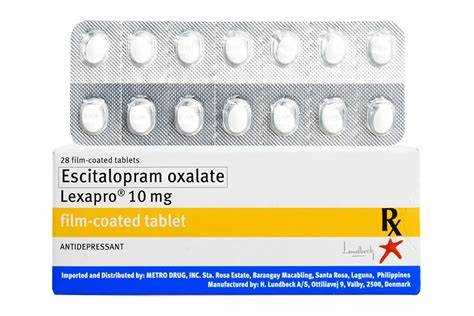
Introduction to Lexapro
In the realm of mental health treatments, certain medications stand out due to their efficacy in addressing various psychological conditions. This article focuses on Lexapro, a widely used antidepressant, exploring its diverse applications, potential benefits, and side effects. Additionally, we will provide essential dosing guidelines to ensure both effectiveness and safety.
Antidepressants play a crucial role in managing mood disorders, offering relief to individuals whose symptoms impact their daily lives. Lexapro has been extensively studied and prescribed, demonstrating a significant positive impact on patients’ mental well-being. Understanding its therapeutic applications unveils a comprehensive picture of how it supports emotional stability.
However, like all medications, Lexapro is not without potential drawbacks. Recognizing the spectrum of possible reactions, from mild discomfort to more serious concerns, is vital for anyone considering or currently undergoing treatment. By shedding light on these aspects, we aim to provide a balanced view of what to expect.
Understanding Lexapro: A Comprehensive Overview
Lexapro is a pivotal medication in treating various psychological conditions, enhancing mental well-being. This section unravels the intricacies of this pharmaceutical marvel, highlighting its mechanisms, benefits, and considerations.
The Significance of Lexapro
At its core, Lexapro represents a breakthrough in pharmacological innovation, offering hope to individuals facing mental health challenges. Its narrative is one of resilience and restoration, establishing it as a beacon of therapeutic efficacy in psychopharmacology.
Exploring Its Therapeutic Benefits
Lexapro embodies a multifaceted approach to holistic well-being. It works through the delicate interplay of neurochemistry, modulating serotonin levels to promote emotional equilibrium amid the complexities of neurotransmitter dynamics.
Mechanism of Action: How Lexapro Works
Understanding the mechanism behind Lexapro reveals a sophisticated interaction within the body’s chemical pathways. Rather than exerting a blunt force, its efficacy lies in subtly enhancing serotonin activity. Serotonin, the key neurotransmitter involved in regulating mood, cognition, and behavior, is crucial in Lexapro’s therapeutic effects.
By inhibiting the reuptake of serotonin, Lexapro prolongs its presence in synaptic gaps, fostering a sustained influence on neural circuits. This action contributes to a sense of emotional balance and stability.
Key Advantages of Lexapro
When considering Lexapro, it’s essential to recognize the numerous advantages it offers beyond addressing specific health concerns. Here are some key benefits:
- Enhanced Emotional Stability: Many users report improved mood stability, leading to an overall better quality of life.
- Improved Cognitive Function: Users may find enhanced cognitive abilities, aiding in tasks such as problem-solving and decision-making.
- Alleviation of Distress: Lexapro can mitigate distressing symptoms, allowing for greater comfort and ease.
- Enhanced Quality of Life: By addressing underlying concerns, users often engage more fully in daily activities, pursue interests, and foster meaningful relationships.
These advantages underscore the multifaceted benefits of Lexapro, enhancing overall well-being and quality of life.
Conditions Treated by Lexapro
Lexapro addresses a wide range of mental health issues that can significantly impact daily life. Here are the primary conditions treated:
Depressive Disorders
Lexapro targets various forms of depressive disorders, ranging from mild episodes to chronic conditions. Individuals facing these emotional challenges often find relief through effective treatment options like Lexapro.
Anxiety Disorders
Anxiety manifests in diverse ways, from generalized worry to debilitating panic attacks. Lexapro provides a steadying influence in the midst of anxiety, offering relief from persistent unease.
- Generalized Anxiety Disorder (GAD)
- Panic Disorder
- Social Anxiety Disorder (SAD)
Recognizing the nuances of these conditions is crucial for tailored interventions that acknowledge individual experiences.
Potential Side Effects
Like all medications, Lexapro may lead to adverse reactions, which are important for informed decision-making. While not everyone will experience side effects, awareness of possible reactions is crucial for effective treatment management.
Commonly reported side effects may include:
- Gastrointestinal disturbances
- Changes in sleep patterns
- Fluctuations in appetite
- Mood alterations, including increased anxiety or depressive symptoms
Moreover, potential interactions with other medications or substances require careful consideration in clinical assessments.
Managing Side Effects
To effectively manage potential side effects, it’s important to establish open communication between healthcare providers and patients. Encouraging patients to report any discomfort allows for timely adjustments to treatment regimens.
Additionally, educating patients about possible side effects prepares them to recognize symptoms and differentiate between expected reactions and more serious complications. Proactive management, such as dose adjustments, can optimize therapeutic benefits while minimizing adverse effects.
Proper Dosage Guidelines
Administering Lexapro correctly is crucial for achieving its intended effects while minimizing risks. Proper dosing involves a tailored approach, considering the severity of the condition, individual medical history, and any concurrent treatments.
Dosage Stages
- Initiation Phase: Start with a conservative initial dose to gauge response and tolerance.
- Titration: Adjust the dosage incrementally based on the patient’s response to optimize benefits and tolerability.
- Maintenance: Once the desired effect is reached, maintain the patient on the lowest effective dose, regularly reassessing its appropriateness.
It is vital to adhere strictly to the prescribed regimen. Deviating from the recommended dosage can compromise treatment outcomes and patient safety.
Adjusting Dosage for Optimal Efficacy
Fine-tuning the dosage of Lexapro is essential for maximizing its effectiveness while minimizing potential side effects. Adjustments should be gradual and based on individual responses.
Regular monitoring and open dialogue between patients and healthcare professionals are crucial during this process. This collaborative approach allows for timely interventions and necessary modifications based on treatment response and tolerance levels.
Making Informed Decisions
Navigating the complexities of Lexapro requires a comprehensive understanding of its benefits, potential side effects, and proper dosage management. By fostering collaboration between healthcare providers and patients, individuals can maximize the therapeutic potential of Lexapro while minimizing risks.
This holistic perspective ensures that both patients and healthcare professionals are well-equipped to make informed decisions, ultimately enhancing the journey toward improved mental health and well-being.
